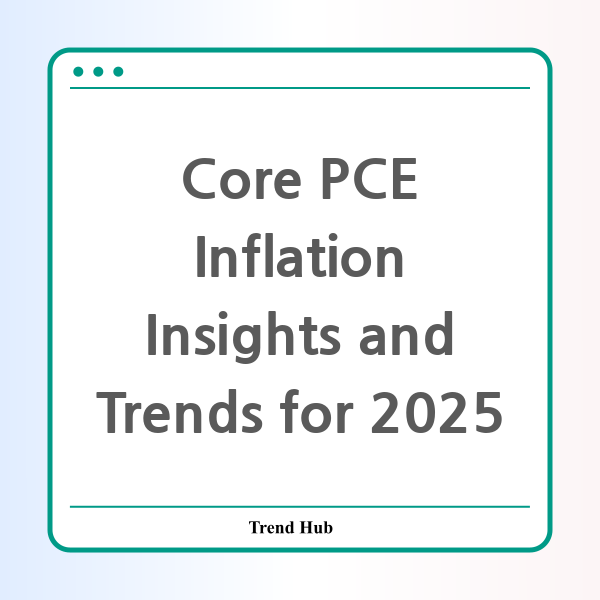* This website participates in the Amazon Affiliate Program and earns from qualifying purchases.

Is inflation finally stabilizing? Recent PCE data offers insights!
As we embark on 2025, the latest Personal Consumption Expenditures (PCE) report has underscored some significant trends in inflation, which continues to be a focal point for consumers, investors, and policymakers alike. The core PCE price index, a metric closely monitored by the Federal Reserve, has maintained its annual rate at 2.8% for the third consecutive month. This reading aligns with expectations, indicating that the underlying inflation dynamics may be stabilizing amidst various market fluctuations.
According to the report, headline inflation increased by 2.6% year-over-year as of December 2024, marking a slight uptick from the previous month. This trend suggests that while inflation remains above the Fed's long-term target of 2%, it is showing signs of resilience. Notably, core PCE, which excludes the often-volatile food and energy prices, rose by 0.2% on a monthly basis, reflecting consistency in consumer prices over the last several months.
Why is the core PCE index particularly important? Economic experts generally regard it as a better indicator of long-term inflation trends. The Fed’s strategy, as articulated by Governor Michelle Bowman, indicates a cautious approach towards adjusting interest rates until there is clear evidence of inflation trending towards their target. The recent decision by the Fed to hold its key interest rates steady falls in line with this cautious optimism. Governor Bowman emphasized, "There is still more work to be done to bring inflation closer to our 2 percent goal," underscoring the central bank's commitment to a stable economic environment.
Additionally, the report highlighted growth in personal income, which increased by 0.4%, and consumer spending, which rose by 0.7%. This uptick in spending may be attributed to the robust holiday shopping season, driven by strong consumer confidence and a willingness to invest in durable goods despite looming tariff threats from the federal administration. Such spending patterns indicate that consumers are not only responding to economic conditions but are also optimistic about future prospects.
Furthermore, it is essential to analyze the broader economic context where rising grocery and energy prices have contributed to the overall inflationary trend. Despite the fluctuations in these sectors, the core inflation metrics suggest that consumers are beginning to adapt to these changes while maintaining their spending habits. This adaptive behavior could be vital for sustaining economic growth in the upcoming year.
What does this mean for the average consumer?
For everyday consumers, understanding the nuances of core versus headline inflation is crucial. While it may be tempting to focus solely on the more visible price increases in groceries and gas, the core PCE reveals a more stable yet slightly elevated inflation environment.
As we look ahead, the potential for a "soft landing" in the economy—where price stability is achieved without triggering a recession—remains plausible. With ongoing developments and economic indicators, many experts will be monitoring the situation closely to gauge whether the Fed's cautious approach will yield the desired results.
In summary, the latest PCE report presents a mixed yet informative picture of inflation as we transition into 2025. While price pressures persist, the overall stability in core inflation readings provides a glimmer of hope that the Fed's objectives may be achievable in the coming months. As consumers, businesses, and policymakers navigate these challenging waters, staying informed about these trends will be pivotal for making sound financial decisions.
* This website participates in the Amazon Affiliate Program and earns from qualifying purchases.